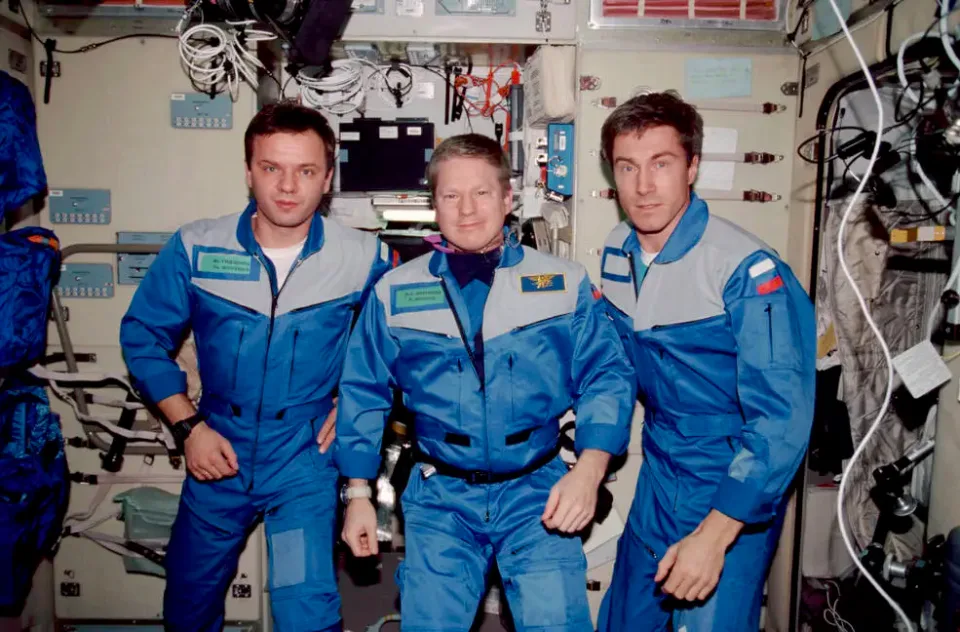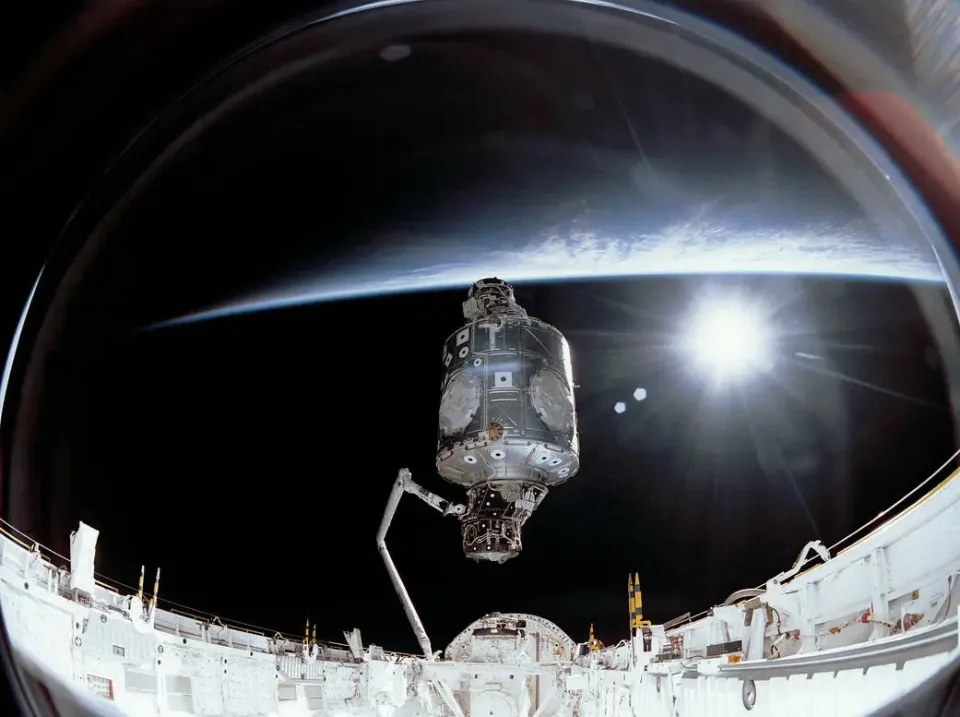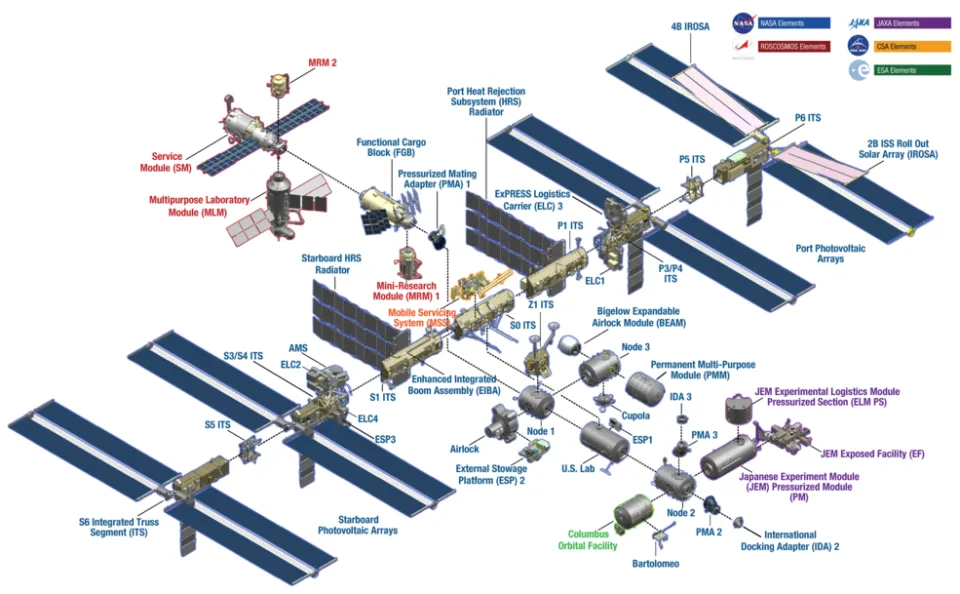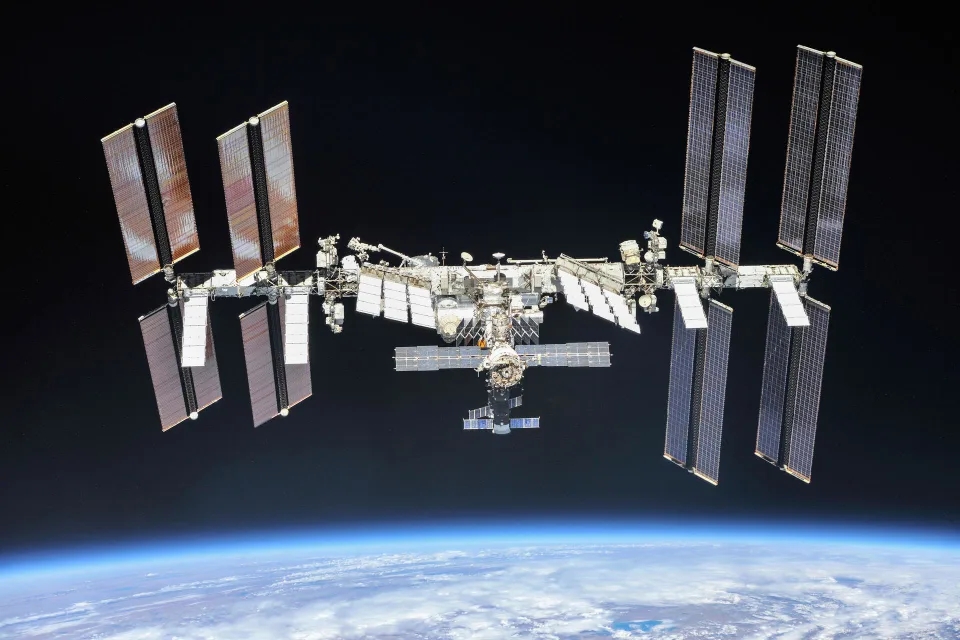Wednesday commemorates the 25th anniversary of the physical assembly of the International Space Station (ISS) in orbit. On December 6, 1998, the crew aboard the space shuttle Endeavor affixed the US-built Unity node to the Russian-built Zarya module, initiating the modular construction of the ISS. A quarter-century later, we reflect on the milestones and breakthroughs achieved by one of humanity’s most remarkable feats of engineering and international collaboration.
Orbiting the Earth 16 times every 24 hours at a speed of five miles per second, the ISS has housed researchers for over 23 years. This monumental project is the result of collaboration among five space agencies from 15 countries, namely NASA, Roscosmos (Russia’s national space agency), ESA (European Space Agency), JAXA (Japan Aerospace Exploration Agency), and CSA (Canadian Space Agency), all of which have played vital roles in the station’s assembly and operation.
From ink to orbit
Its official inception traces back to the early 1990s when the United States’ Freedom project (initiated by President Ronald Reagan in 1984) and Russia’s Mir-2 space station faced imminent threats of stagnation. Freedom encountered jeopardy primarily due to insufficient Congressional funding amid escalating costs, while Mir-2 teetered on the edge, partly owing to financial hardships following the collapse of the Soviet Union.
On September 2, 1993, recognizing the need for international collaboration to overcome their respective challenges, the two nations signed an agreement to amalgamate their programs and join forces for a collaborative mission—an idea that seemed remarkably implausible just a few years earlier. The pact was sealed by US Vice President Al Gore and Russian Prime Minister Viktor Chernomyrdin, formally giving birth to the cosmic laboratory now known as the ISS.

The subsequent years witnessed a comprehensive redesign to incorporate Russian technology into America’s existing Freedom plans. A pivotal moment occurred in 1995 with the docking of NASA’s Atlantis to Russia’s Mir station, symbolizing the tangible outcomes of the once-doubted collaboration. Further milestones included the infusion of funding and cooperation from Europe, Canada, and Japan in 1996, along with Russia’s launch of Zarya a month before the commencement of ISS assembly. This collective effort culminated in a historic day 25 years ago when the space technologies of both nations seamlessly integrated, signaling the conclusion of the Cold War-era space race.
The inaugural crewed mission commenced on November 2, 2000, with NASA astronaut Bill Shepherd and cosmonauts Yuri Gidzenko and Sergei Krikalev stepping onboard. This pioneering crew spent four months in space, establishing the foundation for subsequent missions. (Peggy Whitson holds the record for the most time living and working in space, celebrating 665 days aboard the ISS in 2017.)

In February 2001, the US Lab Module successfully connected to the station, augmenting the station’s onboard living space by an impressive 41 percent. Four years later, Congress officially designated the US section as a national laboratory. This move, far more than a mere symbolic gesture (although it held symbolic significance as well), had substantial implications, unlocking avenues for funding and research from a diverse array of institutions, including universities, other government agencies, and private businesses. By 2008, laboratories from Europe and Japan had also become integral parts of the ISS.
The construction and expansion of the ISS, spanning from 1998 to 2010, accumulated approximately 900,000 pounds of modules. The station, boasting about $100 billion worth of equipment, orbits the globe, serving as a testament to international collaboration in space exploration.
Research and breakthroughs

Throughout the ISS’s extensive journey, which spans over 100,000 orbits of the Earth, it has played a pivotal role in catalyzing breakthroughs across diverse domains, ranging from disease research to understanding bodily changes induced by microgravity.
The examination of how proteins, cells, and biological processes behave in microgravity has significantly advanced research in various health areas, including Alzheimer’s, Parkinson’s, heart disease, and asthma. Many of these studies, owing to the unique conditions of microgravity, would have been unfeasible on Earth. Additionally, experiments on protein crystal growth conducted on the ISS have spurred progress in developing treatments for conditions such as cancer, gum disease, and Duchenne Muscular Dystrophy.
ISS researchers have also made surprising discoveries related to “cool flames,” which can burn at exceptionally low temperatures. The study of these phenomena, nearly impossible outside of microgravity, has challenged our previous understanding of combustion. This research holds the potential to open new frontiers in the realm of internal combustion engines (ICE), potentially enabling them to operate with increased cleanliness and efficiency.
Research conducted aboard the space station has played a crucial role in enhancing our understanding of human muscle atrophy and bone loss. ISS astronauts, who typically engage in at least two hours of daily workouts, contribute valuable insights to prevent these conditions. The study of how extended periods in microgravity impact muscle deterioration and recovery is not only relevant to space exploration but also holds implications for Earthbound patients confined to bed for extended durations. Furthermore, this research contributes to our understanding of conditions like osteoporosis, facilitating the development of improved preventative measures and treatments. Additionally, insights into broader biological changes in microgravity gained from this research may prove invaluable for future human colonization efforts on Mars.
Innovations in water purification systems, designed to sustain astronauts over extended periods, have yielded practical benefits on Earth. ISS astronauts achieve an impressive 98 percent recycling rate for urine and sweat using highly efficient and compact systems. This technology has found application in diverse areas such as agriculture, disaster relief, and aid provision for less developed regions.
Astronauts aboard the ISS conducted research on the Bose-Einstein Condensate (BEC), often referred to as the “fifth state of matter,” displaying significant deviations from known states such as solids, liquids, gases, and plasmas. In a groundbreaking development in 2018, the ISS’s Cold Atom Lab successfully generated BEC in orbit for the first time. The colder temperatures and absence of gravity in space allow for extended observation times, providing researchers with valuable insights into the behaviors of atoms and BECs. This research not only holds importance for the study of quantum physics but also has the potential to contribute to the development of more advanced quantum technologies in the future.
For a more comprehensive exploration of the ISS’s breakthroughs, NASA offers a dedicated write-up from 2020.
Decommissioning

The decommissioning of the ISS is currently scheduled for January 2031, with Russia planning to depart in 2028. The infrastructure from the late 90s is aging rapidly, and the space station’s maintenance costs are becoming increasingly prohibitive over the long term. The void left by the ISS is expected to be filled by government and commercial orbital labs in the subsequent years.
When the time for decommissioning arrives, the ISS will undergo a controlled deorbit process. Kirk Shireman, deputy manager of NASA’s space station program, discussed potential aspects of this process with Space.com in 2011, stating, “We’ve done a lot of studies. We have found an orbit and a change in velocity that we believe is achievable, and it creates a debris footprint that’s all in water in an unpopulated area.”
Engadget’s Andrew Tarantola has covered the impending demise of the ISS.
Beginning about a year before the planned decommissioning date, NASA will allow the ISS to begin degrading from its normal 240-mile high orbit and send up an uncrewed space vehicle (USV) to dock with the station and help propel it back Earthward. The ultimate crew from the ISS will evacuate just before the station hits an altitude of 115 miles, at which point the attached USV will fire its rockets in a series of deorbital burns to set the station into a capture trajectory over the Pacific Ocean.
NASA intends to steer any remaining fragments of the ISS into a secluded region of the South Pacific Ocean. Kirk Shireman emphasized the continuous refinement of plans, stating, “We’ve been working on plans and updating them periodically. We don’t want to ever be in a position where we couldn’t safely deorbit the station. It’s been a part of the program from the very beginning.”
NASA 25th-anniversary event
On Wednesday, NASA hosted a live-streamed event commemorating the 25th anniversary of the Zarya and Unity modules’ linkage. The discussion featured all seven crew members of the STS-88 Space Shuttle Mission, along with NASA Associate Administrator Bob Cabana (mission commander) and ISS Program Manager Joel Montalbano. For those interested, you can view the event here:




